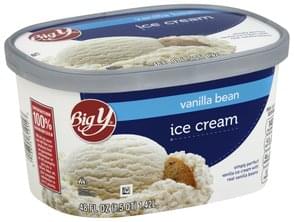

Were you looking for Coles Vanilla Cake Baking Mix With Icing, Coles Vanilla Cake Mix, or Coles Vanilla Cornet Cones instead? You can easily search for different foods with calcount’s search box.Ĭoles Vanilla Bean Ice Cream Tub is a common food consumed in Australia. You can also go for homemade ice cream that’s simple and nutrient-dense.This Nutrition Information is for Coles Vanilla Bean Ice Cream Tub. It’s best to choose ice cream that’s minimally processed and contains few ingredients. This dessert includes no added sugar, fewer calories, and more nutrients than regular ice cream. You can serve the mixture immediately or freeze it for a more scoopable texture. Pulse the items in a blender or food processor until you reach a creamy consistency. 4 tablespoons (60 ml) of unsweetened almond, coconut, or cow’s milk.2 ripe bananas, frozen, peeled, and chopped.If you’re watching your weight, look for products with less added sugar and fewer than 200 calories per serving.Īlternatively, try making a low-calorie, nutrient-dense ice cream at home using only two simple ingredients: If possible, avoid heavily processed ice creams by choosing those with a small number of easy-to-read ingredients ( 16). Choose products made mostly from real ingredients, such as cream, milk, cocoa, and vanilla beans. When shopping for ice cream, check the nutrition and ingredient labels carefully. It’s low in nutrients, high in added sugar and calories, and may contain artificial ingredients. What’s more, animal and test-tube research suggest that carrageenan, likewise found in ice cream, may promote intestinal inflammation ( 15). It’s generally considered safe but has been associated with mild side effects, such as bloating, gas, and cramps ( 14). Guar gum, which is used to thicken and texturize foods, is also common in ice cream. Although they’re approved by the FDA, some research links these dyes to hyperactivity and behavioral issues in children ( 13). These compounds were common in ice cream and other desserts ( 11, 12).Īdditionally, processed ice creams regularly harbor artificial food dyes, such as Red No. Notably, the Food and Drug Administration (FDA) recently banned seven artificial flavorings, including benzophenone, given their association with cancer in animal studies. Some artificial ingredients and preservatives have been associated with negative health effects, while others have been proven safe. Many ice creams are highly processed and include ingredients like artificial flavors and additives. Plus, ice cream’s high calorie load may promote weight gain if you eat too much. However, if you often replace nutrient-dense foods like fruits, vegetables, or whole grains with ice cream, your diet could be lacking necessary vitamins and minerals. If you eat ice cream as an occasional treat, you shouldn’t worry about its lack of nutrients. Ice cream is laden with calories but offers few nutrients - aside from calcium and phosphorus ( 10). Thus, one or two small servings of ice cream can easily push you toward this daily limit.Īdditionally, research links excessive sugar intake to multiple health conditions, including obesity, heart disease, diabetes, and fatty liver disease ( 8, 9). It’s recommended that you limit added sugars to under 10% of your daily calories, or about 50 grams of sugar for a 2,000-calorie diet ( 7). Many varieties contain 12–24 grams of added sugar in just a 1/2-cup (65-gram) serving ( 1). It’s no secret that ice cream is loaded with sugar. Like most processed desserts, ice cream has several health drawbacks to keep in mind. Although low-fat and no-sugar-added choices are commonly marketed as healthier, they’re still calorie-dense and may contain various sweeteners. Most ice cream is high in calories and added sugar while low in nutrients. Yet, this mineral content doesn’t compensate for ice cream’s heavy calorie and sugar load. Both minerals are important for muscle function and skeletal health ( 6). Interestingly, while low-fat or no-sugar-added products are often promoted as healthier, these choices may contain around the same number of calories as regular ice cream.Īdditionally, products without added sugar usually harbor sweeteners like sugar alcohols, which may cause digestive distress, including bloating and gas, in some individuals ( 5).Īll the same, most ice creams are a rich source of phosphorus and calcium, providing about 6 and 10% of the Daily Value (DV), respectively, per 1/2-cup (65-gram) serving. In most cases, premium ice cream - which is processed to be richer and creamier than regular ice cream - is also higher in sugar, fat, and calories.


 0 kommentar(er)
0 kommentar(er)
